The Hayes Family
Host: Undoolya Station
Written by Nikita Hayes
The Hayes family has a long history in Central Australia. Here’s a look at how this pioneering family began back in the 1800’s.
HAYES, WILLIAM
1827-1913, a pastoralist, William was born in Liverpool and brought up in Wales, where he became a butcher. He claimed that when he arrived in Adelaide in the early eighteen fifties he was only twenty-one years old. The same spirit of adventure that motivated his migration led him to outback South Australia. It is on record that he passed through Port Augusta. Some years later he married Mary Stratford of Goodwood. Mary’s parents had met on the ship bringing some of the earliest settlers to Adelaide. Her father, the ship’s carpenter, healed her mother’s (also Mary) badly scalded leg with bread poultices … the ship’s doctor wanted to amputate. They were married on arrival in Adelaide. Mary, the future Mrs William Hayes, was born in a tent on the banks of the Torrens about 1840. She proved to be her husband’s equal as a pioneer, enduring all the hardships of the years of their nomadic life as station contractors carting wool to Adelaide or Port Augusta, returning with station stores, dam sinking, fencing and shearing.
In the drought of the mid-1860s they lost all 30 of their working bullocks. Leaving the north they secured work on drainage and other contracts in south-east South Australia. On returning north William had contracts that took him as far as Coopers Creek with goods and returning with wool. However, amongst all the contracts he regarded ‘the conveyance of five tons of copper ore in one lump from the Yudanamutpna mine to Port Augusta for exhibition in London’ as a proud achievement, for he did it single-handedly.
In 1884 Sir Thomas Elder engaged Hayes to construct fencing and sink dams on his newly acquired Central Australian station, Mount Burrell. As Edward, their youngest child, was born on 16 June that year, it is probable that their departure was after his birth. They set out with three bullock wagons loaded with stores and all their household possessions, and another two wagons loaded with fencing wire, scoops, harness and all necessary tools for a far distant land. The slow-moving bullock wagons took several months to reach Mount Burrell (now known as Maryville).
As an interlude between his contracts with Elder, in 1890 Hayes took his teams to Warrina, then the terminal point of the northern railway, to haul a large consignment of steel telegraph poles to Alice Springs. On 1 January 1893 Hayes, began to put his roots down in Central Australia. In his rest he decided to venture as a pastoralist he purchased 162 cattle from Tom Williams of Paddy’s Hole, Arltunga. He admitted that when several died soon after he did not share his family’s confidence in his future as a station owner. However, with the remarkable support of his wife and family, twenty years later they had become the most successful pastoralists in Central Australia. When interviewed by the press in Adelaide years later, William Hayes wanted to make the sole topic of the conversation ‘the assistance he had received from his family’. The interviewer commented: ‘It is doubtful whether the pastoral industry ever produced more remarkable women than Mrs Hayes and her daughters, who for many years undertook their full share of the station work. They could muster, brand, drove, slaughter and dress cattle with the best man going.’
In the devastating drought of the 1890s, Thomas Elder withdrew from Mount Burrell and the cancelled leases were then available for new applicants. A man named Cox secured the homestead block with a new lease. On 1 July that same year, 1895, Hayes gained his rest of foothold on Mount Burrell by securing the lease upstream on the Hugh River from the homestead block. He continued to apply for Mount Burrell leases until he held six, every one with a common boundary on the north, east and south with the homestead lease, while Henbury closed it in on the west. Coulthard, who by this time was involved with his own Tempe Downs leases, sold the homestead block to Hayes. The title to the homestead block was transferred in 1901. In 1903 Hayes transferred all seven leases into the corporate ownership of Hayes and Family. He had long since abandoned the Deep Well lease. In 1903 the Hayes family purchased the rest of the Owen Springs lease and then two more the following year. Meanwhile negotiations had commenced for the purchase of Undoolya, but Norman Richardson, a Port Augusta station owner and land speculator, clinched the sale with Willowie, then within the year sold to the Hayes family. and Undoolya’s leases were transferred direct from Willowie to Hayes and Family in 1908.
This completed the signing cant expansion of the Hayes Family stations during the lifetime of William Hayes. They consisted of: Mount Burrell/Maryvale seven leases, total 3753 square kilometers; Owen Springs, six leases, total 4817 square kilometers; and Undoolya, seven leases, total 4908 square kilometers. The grand total was 13,478 square kilometers. In the 1915 Pastoral Inspection Report, the 1914 returns for stock are shown as follows for the combined Hayes and Family stations: 11,339 cattle, 1,316 horses, 400 sheep, and 1,192 goats. The Crown Pastoral Company, Sidney Kidman, holding an almost identical area, had 8,713 cattle and 1,475 horses on their two big stations of Bond Springs and Crown Point.
The son of William
HAYES, EDWARD (TED)
1884-1960, also a pastoralist and pioneer, he was the youngest son of William and Mary Hayes, born at Farina in South Australia. During this period Mary Hayes reared a considerable number of Aboriginal children whose parents were not able to provide for them. There was always plenty of goat’s milk, vegetables and meat available at the station. Ted Hayes, being brought up with these native children, learned to speak the Aranda language very fluently. He could also use sign language like a native; he could communicate with Aboriginal stockmen long before they were in speaking distance of each other.
In 1914 their young son William met with an accident. His parents hurried him to Oodnadatta by buggy and then on to Adelaide by train but he died shortly after arriving there.
In 1922 Ted Hayes became general manager of the Hayes’ properties and shifted with his family from Maryvale to Undoolya with two wagons and a buggy. He had a Dodge car at this time, purchased in 1920 and it was the first station motorcar in the district.
They arrived at Undoolya on 12 March 1922 and settled in to a new life close to Alice Springs, which at the time had about twenty five white people, excluding the telegraph station staff. Hayes and his wife became involved in most town activities, including the race meetings and other sporting events; picnics were very popular also.
In 1930 the original Hayes family decided to sell their station properties. Edward and Jane Hayes purchased Undoolya, which at that time had only one permanent water source, the Emily Gap. Not until 1937 did Hayes discover that bore water was available in the Todd Valley. He and his wife re-purchased Owen Springs in 1937 from the Kidmans and ran it separately from Undoolya. Edward junior and his wife Jean went out to Owen Springs and managed it until 1939.
Hayes never really retired. He still led an active life on the stations until the year before he died in 1960. Although he had for many years raced horses locally, not until the later years of his life did he race several horses in Adelaide, winning the Adelaide Cup with Star Aim in 1958 and a handicap at Flemington in 1956.
Ted Hayes was one of the best cattlemen in Central Australia, and valued every individual beast.
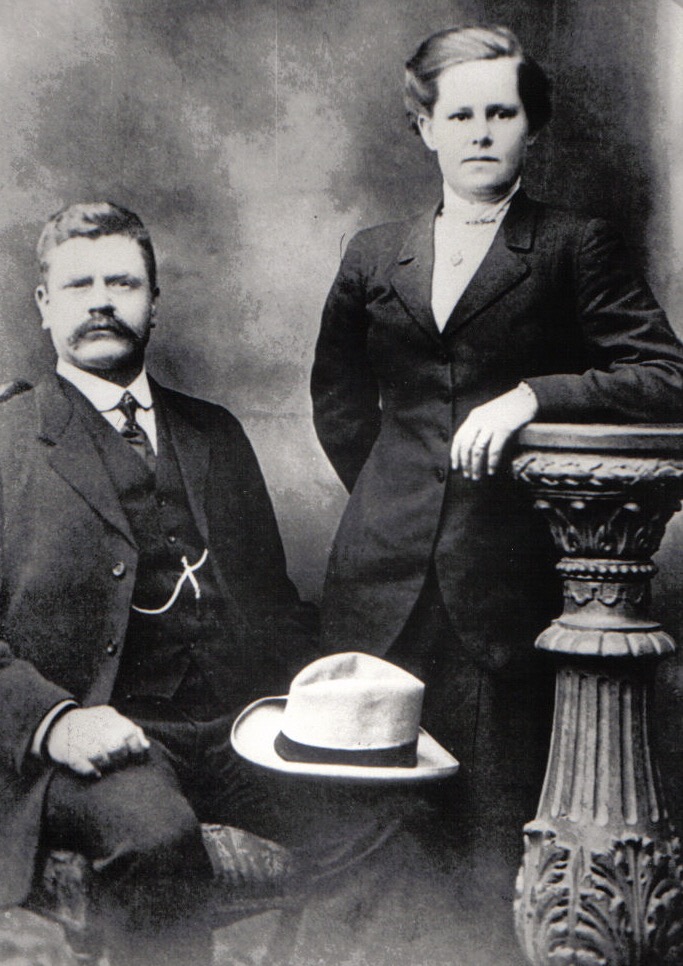 Edward and Jane Hayes.
Edward and Jane Hayes.
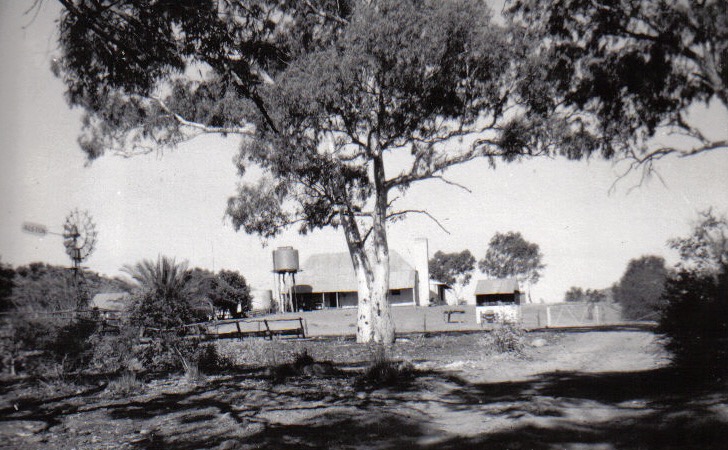 The Undoolya Homestead, the house is still original and still lived in today.
The Undoolya Homestead, the house is still original and still lived in today.
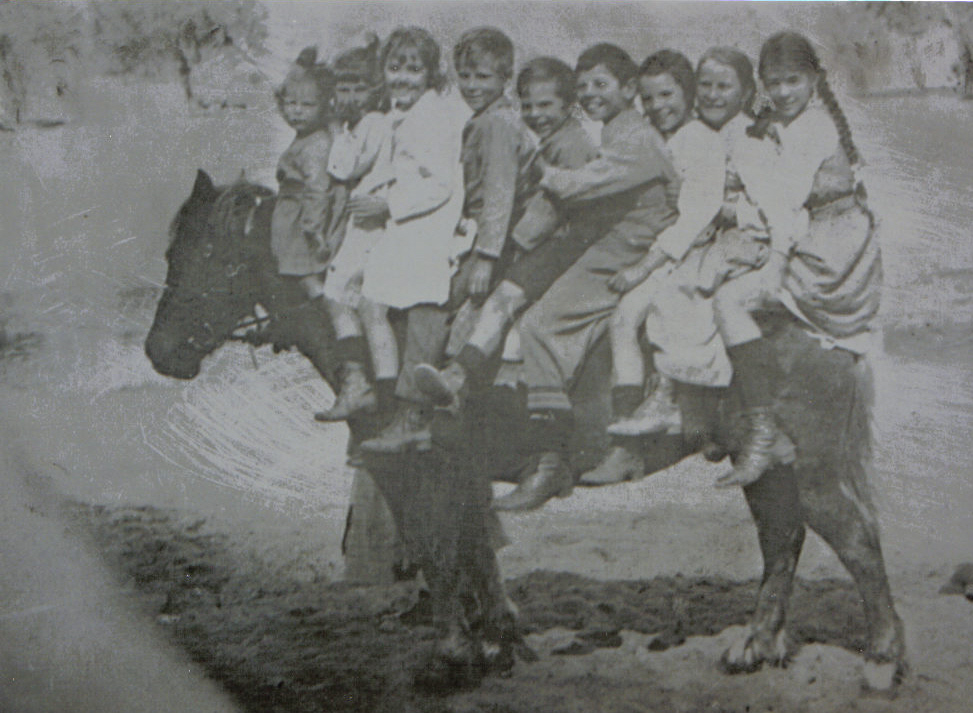 Kids on horse Ted is the 4th from the front. Jims father.
Kids on horse Ted is the 4th from the front. Jims father.ANN JANE DOOLAN-HAYES
Born in 1893, she was born in Blackall, Queensland, the daughter of Pat Doolan and his wife, her mother then married another man called Sam Nicker. Sam, being a shearer, was able to go to Mount Burrell and shear the sheep for the Hayes family. It was there that Edward Hayes met Jane Doolan. The Hayes family had purchased these sheep several years before while they were away from Mount Burrell in the bad drought of 1900. Mary Hayes, Jane’s mother-in-law, and her daughters Mary and Lizzie drove them all the way back to Mount Burrell from Kalamurina on the Diamantina River where they had shifted most of their stock.
Jane Hayes lived with her husband on Mount Burrell, Maryvale and Undoolya stations in turn, and the couple had five children. In 1916 on a visit to her parents at Ryan’s Well, Jane had an accident, when the horses bolted with the buggy and threw her out with her six-month-old baby Strat in her arms.
The baby was unharmed but Jane was injured, including a broken collarbone. A telegram was sent to Maryvale, on hearing the news Edward Hayes rode back to Maryvale, changed his horse and started the long ride north, he rode all night, arriving in Alice Springs in the early hours of the morning. He arrived at Ryan’s Well that evening, a distance, including the ride to Alice Well and back, of 300 kilometers, all the distance between Maryvale and Ryan’s Well on one horse.
Jane Hayes died on 17 December 1968. She is buried with her husband in the Alice Springs cemetery.
HAYES, EDWARD (TED) (The son of Edward Senior)
Born in Alice Springs on 25 August 1914, he was the second son of Edward and his wife Jane.
On 18 October 1937 Hayes married Jean Bloomfield, daughter of Lewis Bloomfield and his wife Lillian of Loves Creek Station. Following their marriage, Hayes took over the management of Owen Springs. In 1939 he moved back to Undoolya to manage it for his father.
Hayes purchased a third share in Undoolya in 1947 and in 1953, when his father did retire, became sole owner. In 1960 he purchased Deep Well and ran the two stations as a single entity comprising 2,600 square kilometers.
By the 1960s Hayes was subdividing and building cattle traps at watering places with trap paddocks to hold the cattle for drafting. He maintained that unless cattle were subjected to regular handling they soon became as wild as feral animals. By the late 1980s he had completed almost 600 kilometers of fencing and was able to handle all his cattle twice a year. By this time Undoolya and Deep Well had 60 watering points so well placed that there was no need for a man made bore. The value in beef quality and the preservation of the fragile land surface was immeasurably enhanced when every beast was close to water.
His knowledge of his family’s history and achievements convinced him that their mutual success in the pastoral industry was based on what could be described as a family cooperative. His love for his wife Jean and their children and grandchildren were recognized by his friends in attitudes rather than words. He had a reserve that did not verbalize on his deep inner feelings and relationships but something of this could be sensed by those who knew him best. He was a man with simple tastes, reserved with strangers yet warm in the friendships he developed.
Hayes died suddenly on 5 March 1988
There were many other tributes. In the Northern Territory Legislative Assembly he was described as ‘a legend in his own time’, ‘a man ahead of his time’, ‘one of nature’s gentlemen’ and ‘a great Territorian’. There were also tributes, in simple words and moving actions, from the old Aboriginal men and women whose ancestral lands encompassed Undoolya. The old men were proud of their totem relationship and of a lifetime of mutual acceptance, expressed in ‘sorry beads’ they made and presented to Hayes’s widow.
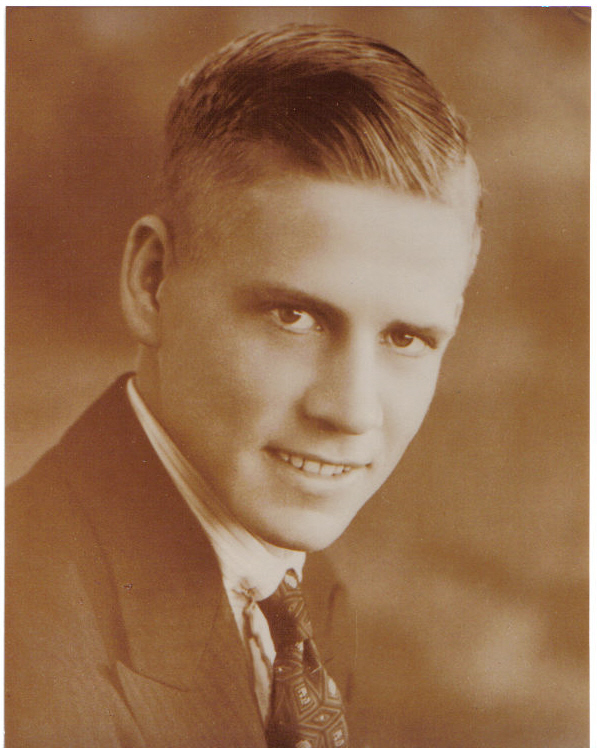 Ted Hayes.
Ted Hayes.
JEAN BLOOMFIELD-HAYES
When Jean Hayes first came to Alice Springs as a month-old baby in a horse-drawn buggy, Alice Springs only had about eight houses.
My great-grandmother had seen more changes in the region than most.
When she had done an interview for ABC she remembers taking the buggy to town from the family cattle station, Loves Creek, to see the first plane land in Alice Springs, and later, the first train. A third exciting trip was made to listen to the brand new wireless.
“They put earphones on us kids,” Jean recalls, “and we couldn’t hear a thing, only the crackle of the bloomin’ static! And they said to us, ‘Did you hear Big Ben?’ Well, Big Ben was a mystery to us, we’d never heard of Big Ben.”
The lack of a local hospital meant Jean and her older sister Peg were both delivered by nursing sisters at the Australian Inland Mission Hostel at Oodnadatta.
“Well it’d definitely be a better world today with all the modern conveniences,” she says. “If you want boiling water, you just switch on a kettle. Once, you had to get a piece of wood and start the oven up.
“Another thing I think is terrific is keeping food – refrigeration and deep freeze and all that. In the early days if you killed a beast, it’d only last a day and then the meat would go off. We lived on corned meat, and you’d have curry one day and fritters the next and rissoles another. We got pretty expert at working out different dishes!”
Her parents had a job to keep the girls inside the house. Jean remembers always finding things to do outside, whether it was riding ponies, donkeys and goats, or droving with her father in the holidays.
The sale of horses for the Army or farm work made up the majority of income for many pastoral properties in the region until the mid 1920s. Cattle numbers were low, and many stations ran sheep until hungry dingoes ultimately decided the fate of the ‘woollies’.
Jean first met her husband, Ted Hayes, when he was seven years old. Ted’s family came to Undoolya station when she was five.
“So it was a budding romance, I suppose, when we were children. Of course, he was about 23 and I was about 21 when we got married.”
They eventually bought Undoolya from Ted’s parents, and Jean spent the next 50 years there with her three children, before retiring with her small dog into a brand new unit in Alice Springs.
“It was a funny feeling, shifting all my bits and pieces in to town, but no good me sitting down out there,”.
“Lucky I’ve got my family around me. Not a day goes past that one of them doesn’t pop in and see me.”
Jean Hayes is a person who I have alway looked up to and aspired to be, Jean passed away when I was only young so I didn’t have a lot to do with her, but the stories I have been told about not only her but the rest of my family too.
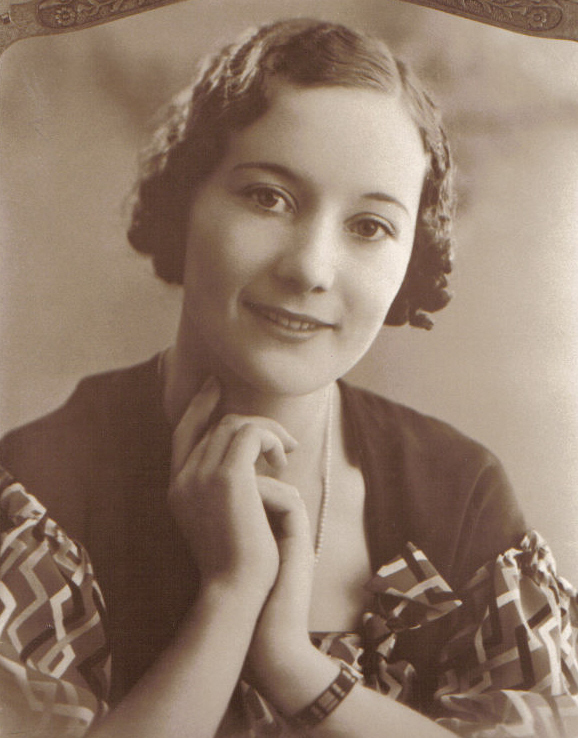 Jean Bloomfield.
Jean Bloomfield.
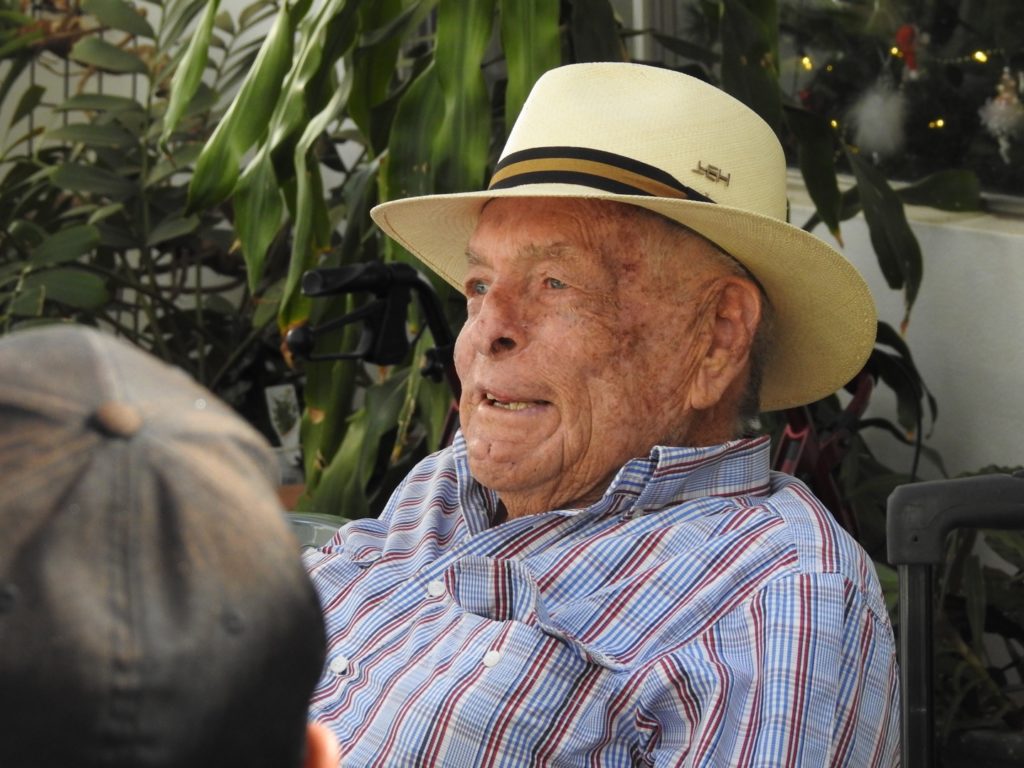 Jim Hayes, Teds and Jeans son and my grandfather.
Jim Hayes, Teds and Jeans son and my grandfather.
